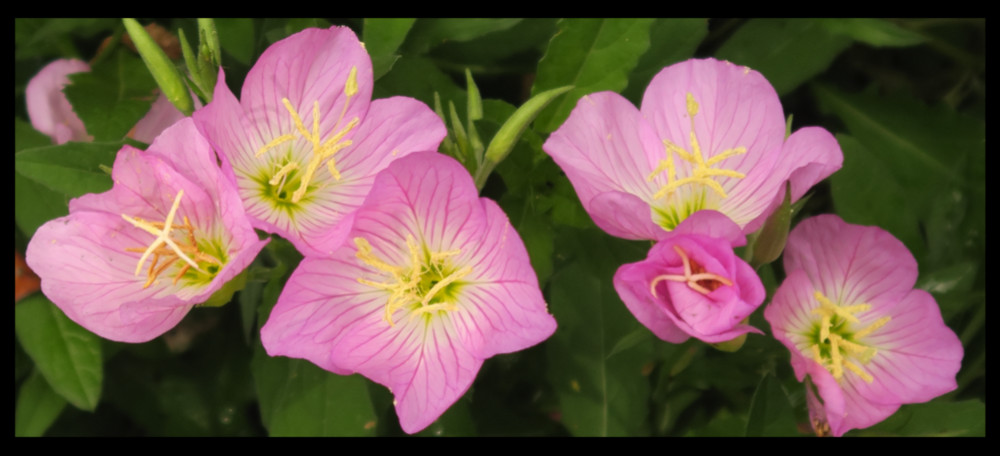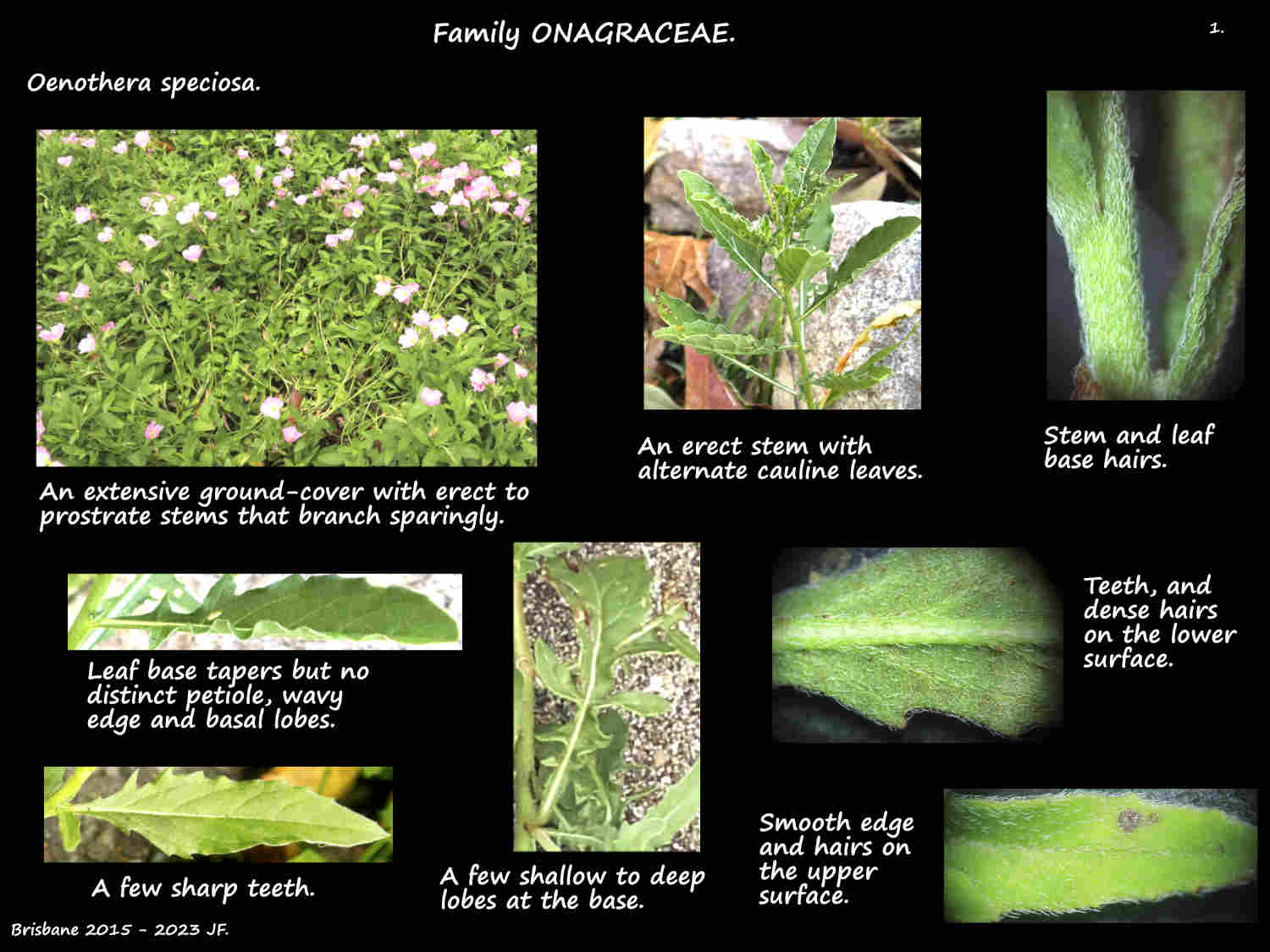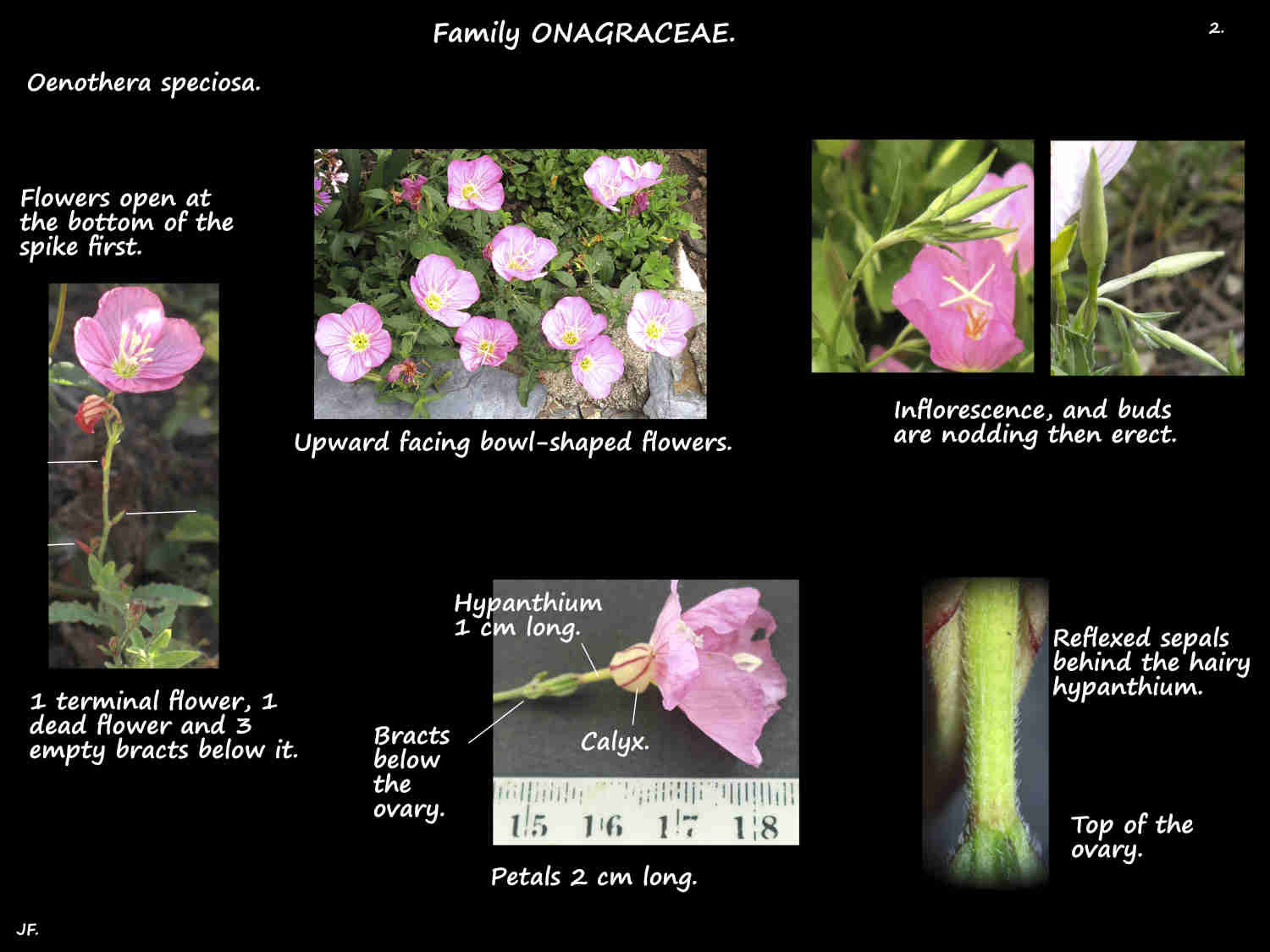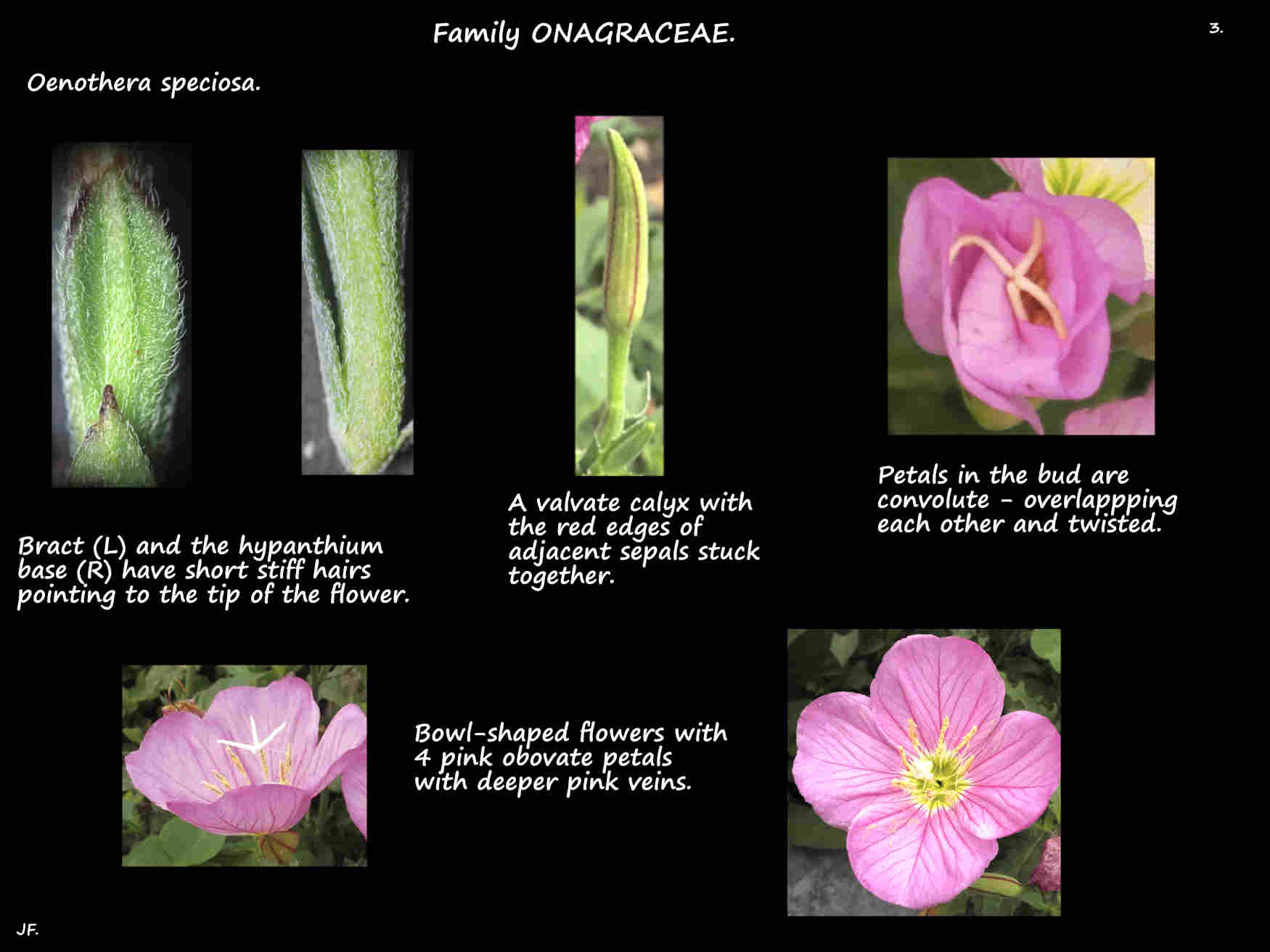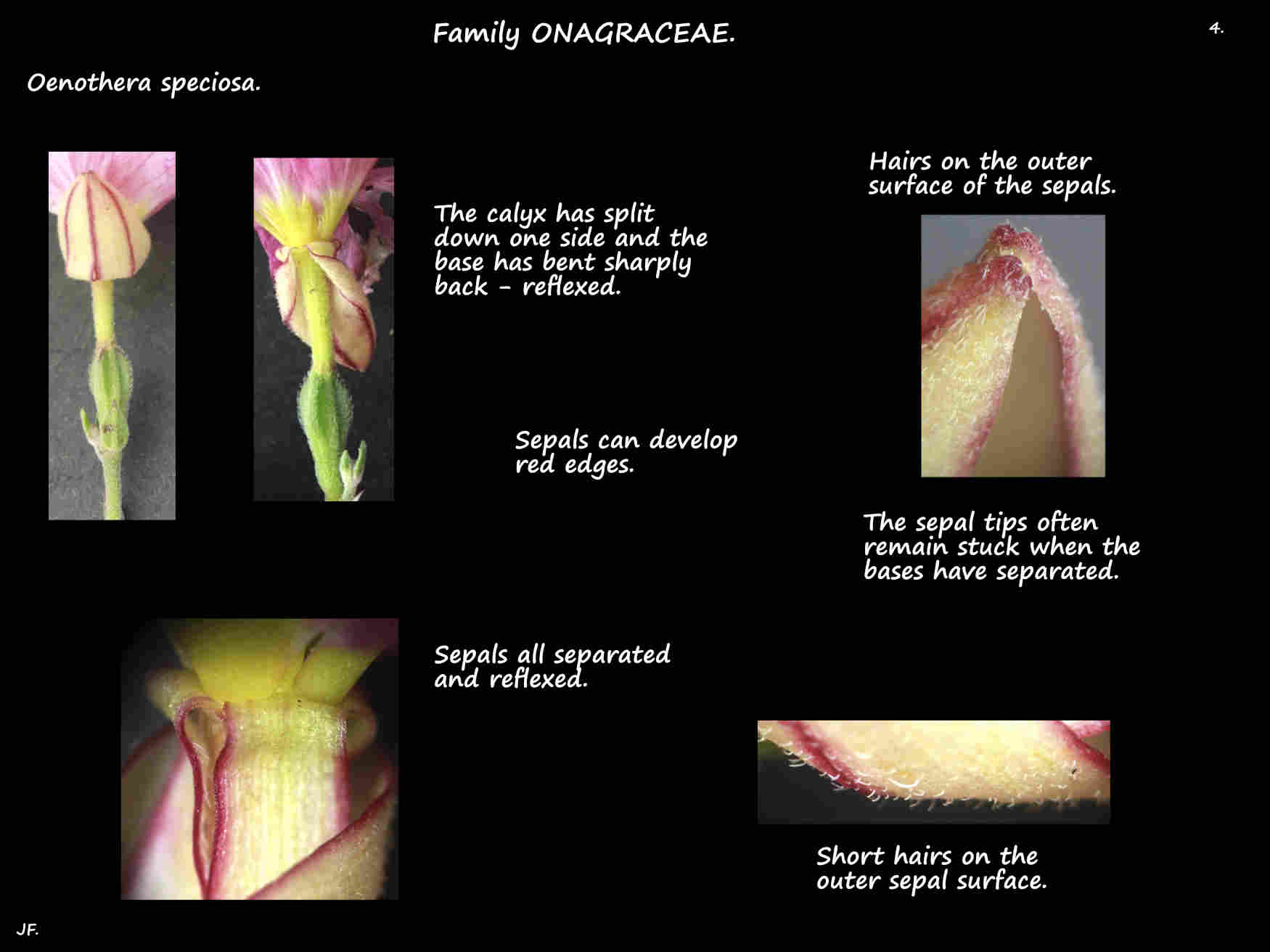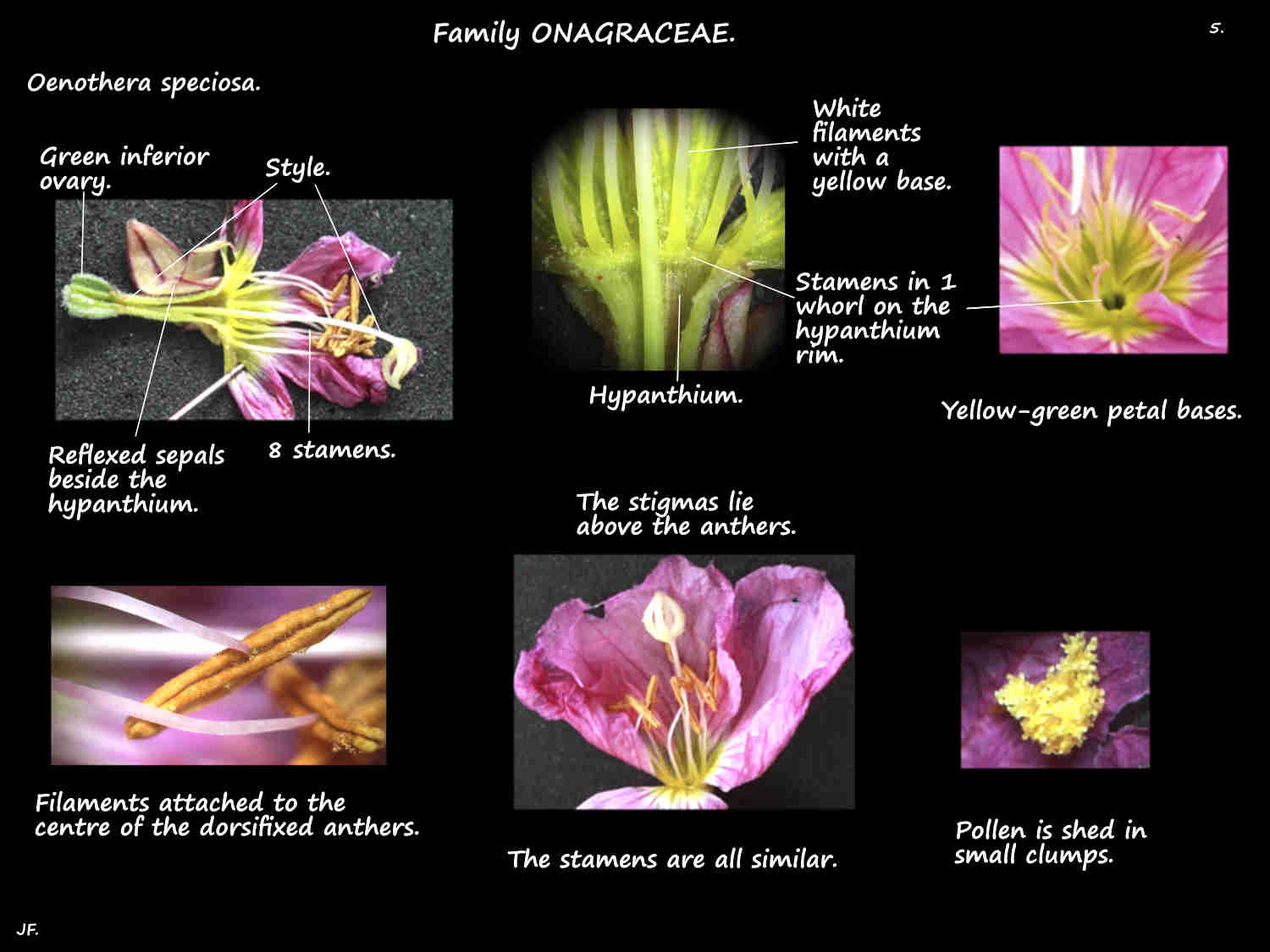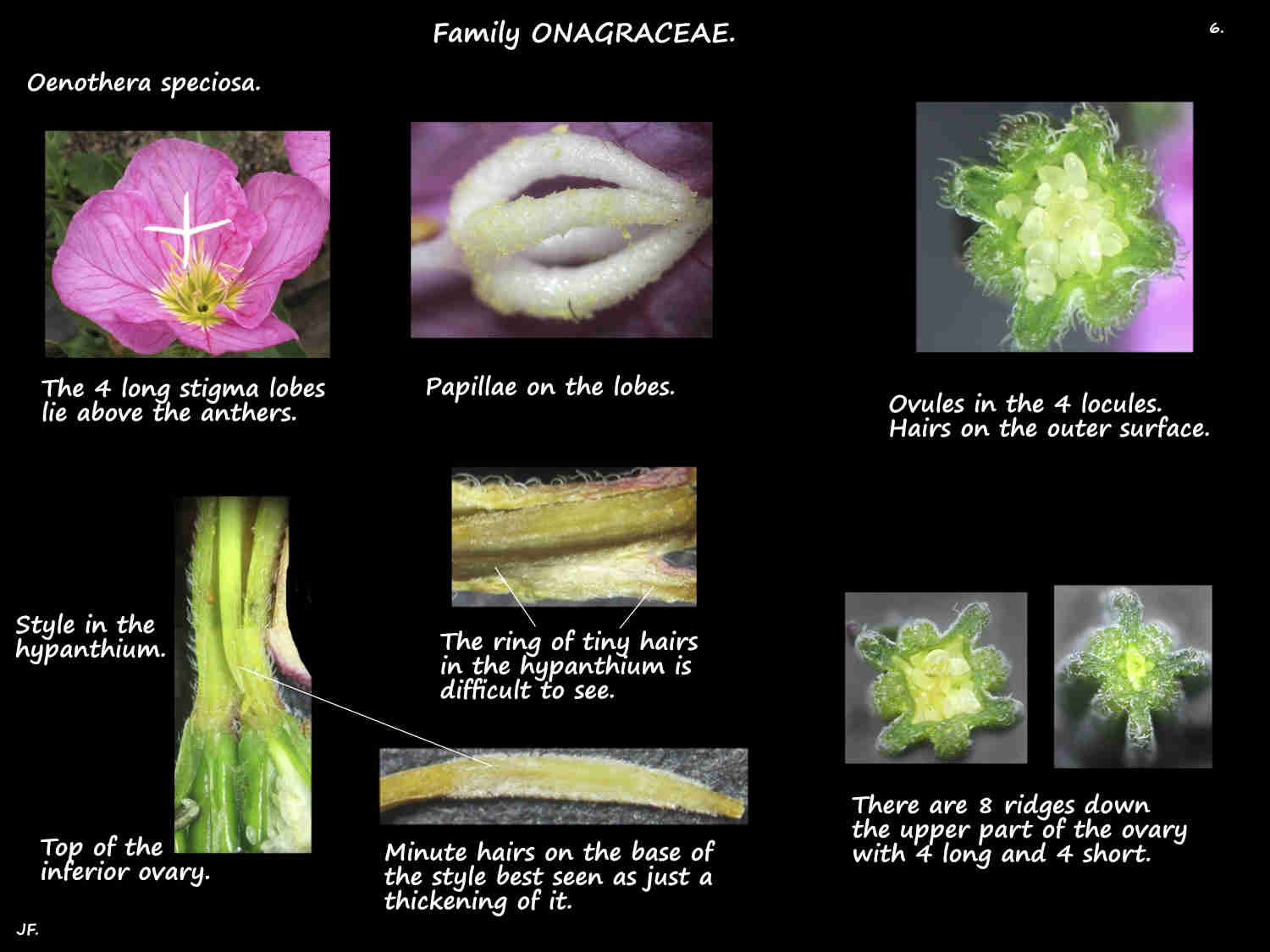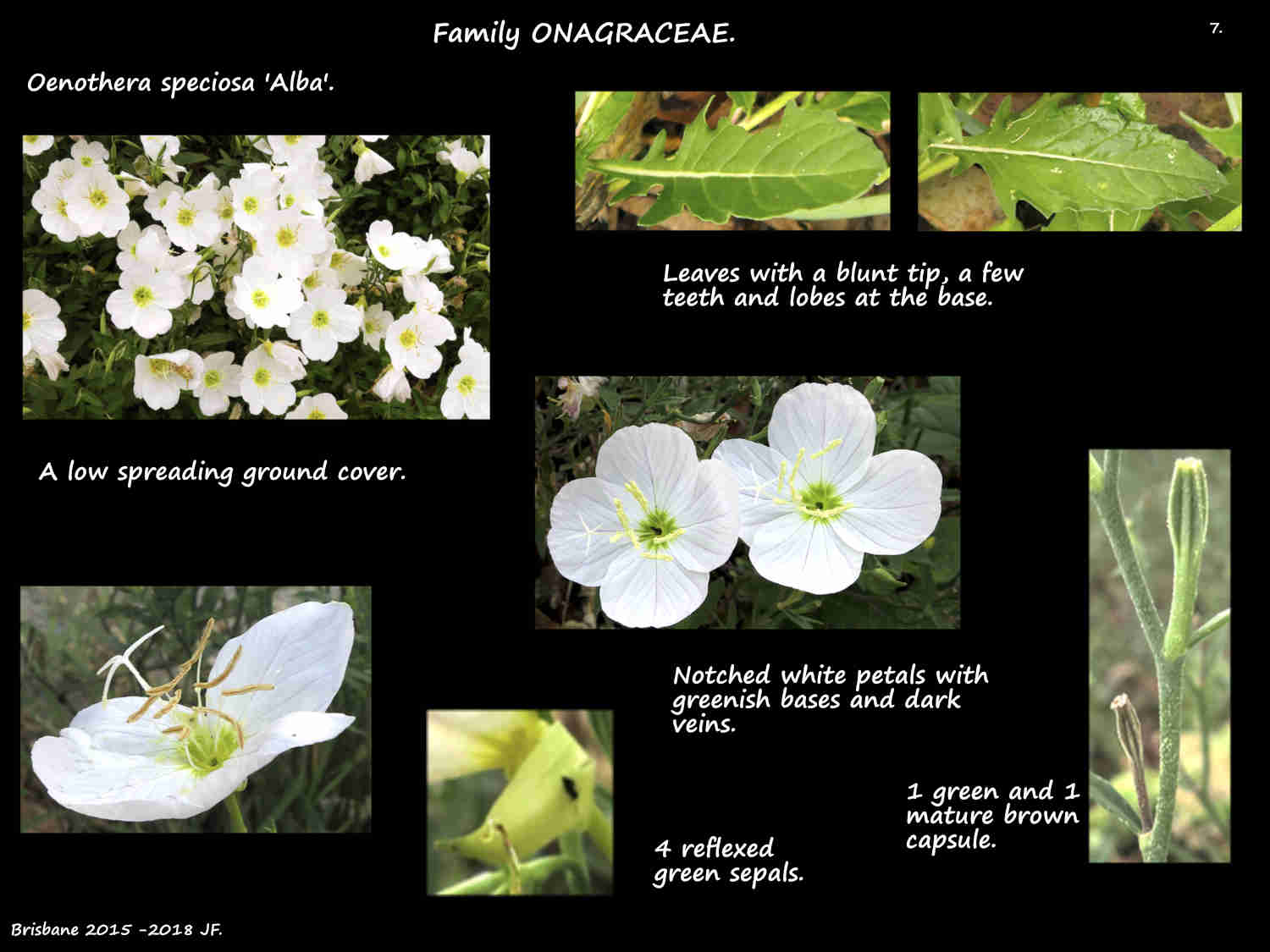Oenothera speciosa.
The Rose or White Evening Primrose is an annual or perennial mostly herbaceous plant.
It can form large mounds as new plants grow from the spreading underground stems (rhizomes).
The thin prostrate to erect stems sometimes develop a woody base making it a subshrub.
Up to 50 cm high the stems have few or no branches.
The hairs on young stems may be lost over time.
There may be a basal rosette of leaves, none or one only on young plants.
Basal leaves are on short petioles up to 8 mm long.
The elliptic, lanceolate or oblanceolate blades are up to 8 cm long.
The tip is usually rounded and the base wedge-shaped.
There are usually a few teeth and sometimes irregular lobes at the base.
Both surfaces have short white hairs that point to the tip of the leaf.
The alternately arranged cauline leaves along the stem are more widely spaced.
On a short or no petiole the blades are up to 6 (9) cm long and 2.5 cm wide.
Their shape is variable including ovate, wide or narrowly elliptic, lanceolate or oblanceolate.
The wavy edges may be smooth, have sharp or blunt teeth and small lobes near the base.
There are short stiff hairs.
Terminal inflorescences are a few solitary flowers along the upper section of the stem.
The stem has short stiff hairs.
At the base of each flower is a stalkless elliptic leaf-like bract up to around 1 cm long.
The young buds droop then become erect before opening.
The bowl-shaped flowers, up to 5 cm across are on a stalk a few mms long.
Opening in the evening the flowers remain open for up to 24 hours.
The tubular green or reddish hypanthium is up to 2.5 cm long and 2.5 mm wide.
There are stiff short hairs on the outer surface that point toward the top.
Internally there is a nectary at the base and a ring of hairs around the middle.
The 4 lanceolate sepals are up to 2.5 cm long.
In the bud their adjacent edges are stuck together except for the top few mms.
As the flower expands the calyx splits between 2 sepals.
The base of the 4 sepal unit, or the whole unit bends back (reflexed).
The outer surface is covered in short stiff hairs.
The sepals are green but may become reddish all over or just along the edges.
The 4 obovate petals are 2 to 4 cm long with a flattish tip that often has a notch in it.
The pink petals, with darker pink veins and a greenish base have no hairs.
There is also a white form whose petals age to pink and there are white and pink cultivars.
The 8 similar stamens, in 1 whorl are inserted onto the rim of the hypanthium.
The 1.5 cm long white filaments have a yellow base.
The yellow anthers are dorsifixed with the filament attaching at the middle.
The anthers open through longitudinal slits releasing small clumps of yellow pollen.
The green roughly cylindrical ovary is covered in short hairs.
The slightly wider upper section has 8 vertical ridges with 4 being longer than the others (wings).
The numerous ovules in each of the 4 locules have axile placentation.
The base of the 3 to 3.5 cm long style is densely covered in minute white hairs.
The 4 long linear stigma lobes lie just above the anthers.
The fruit are hairy ridged, club-shaped loculicidal capsules 10 to 25 mm long and a few mms wide.
J.F.
